When selecting attire for air travel, comfort and safety should take precedence. The cramped quarters and long durations typical of flights necessitate clothing that won’t exacerbate these conditions. However, many travelers often overlook the implications of their fashion choices on their in-flight experience. This article will delve into various clothing items that are best avoided when flying on a plane, highlighting the reasons why certain garments can transform a routine flight into a discomforting ordeal. The objective is to guide travelers towards making wise clothing choices that ensure comfort, safety, and a pleasant journey.
Contents
Tight Clothes
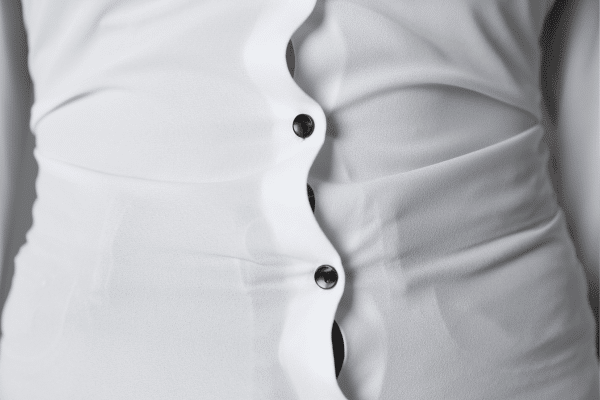
Tight clothing can lead to significant health risks, particularly on long-haul flights. Clothing that restricts blood flow, such as skinny jeans or tight waistbands, increases the risk of deep vein thrombosis (DVT). DVT is a condition where blood clots form in deep veins, often in the legs, and can be exacerbated by prolonged immobility. Additionally, tight clothing fails to accommodate the natural swelling of limbs that occurs at high altitudes, leading to discomfort and potentially serious health concerns.
Aside from health risks, tight clothing proves to be uncomfortable during air travel due to the fluctuating cabin pressure and extended periods of sitting. The pressure changes can cause bloating and discomfort, making tight outfits feel even more constricting. This discomfort is not just limited to the flight’s duration but can also impact the overall travel experience. Opting for looser, more breathable attire can significantly improve comfort, allowing for a more relaxed and enjoyable flight.
High Heels
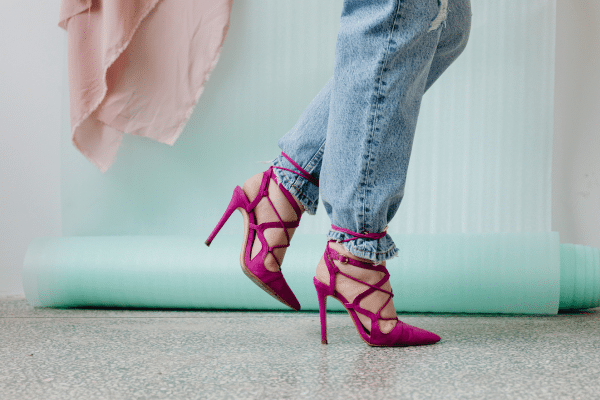
High heels, while fashionable, are impractical for air travel. In emergencies, such as an evacuation, high heels can hinder mobility and even pose a risk of injury. Airplane aisles and emergency exits are not designed for navigating in heels, and in a high-stress situation, these shoes can become a liability. Moreover, moving around the cabin or transiting through large airports becomes a cumbersome task when wearing high-heeled shoes, further complicating the travel experience.
Additionally, high heels are not the best choice for dealing with the common issue of feet swelling at high altitudes. The cabin’s pressurized environment often leads to mild swelling, making tight-fitting shoes like high heels uncomfortable. Prolonged wear of such footwear during flights can result in discomfort and pain. Shoes with a comfortable fit and good support are far more suitable for flying, ensuring both comfort and safety throughout the journey.
Perfumes And Strong Scents

Wearing perfumes or strong scents on a plane can create an unpleasant experience for fellow passengers. In the confined space of an aircraft, scents can become overwhelming and may cause discomfort or even allergic reactions in sensitive individuals. The recirculated air in the cabin amplifies this effect, making it difficult for others to avoid the scent. Thus, it’s considerate to avoid wearing strong fragrances during flights.
Moreover, passengers should be mindful of others who might have respiratory issues or allergies. Strong scents can trigger reactions such as headaches, nausea, or asthma attacks. Instead, opting for unscented or lightly scented personal care products is advisable. This approach ensures a more comfortable environment for everyone on board, respecting the shared space and well-being of all passengers.
Bulky Outerwear
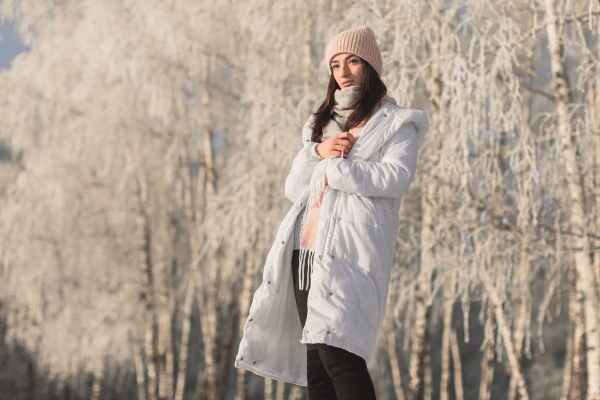
Bulky outerwear, such as large coats and heavy jackets, can be more of a hindrance than a help on an airplane. These items consume a significant amount of space, a scarce resource in the cramped confines of an aircraft cabin. Not only do they restrict personal movement, but they also encroach upon the limited space of fellow passengers. Furthermore, storing these bulky items becomes a challenge, often leading to overstuffed overhead bins or a battle for extra space under the seat.
To stay warm and comfortable without the bulk, consider layering lighter pieces of clothing. Layers can be easily added or removed to adjust to the cabin’s varying temperatures. Opt for a combination of breathable fabrics like cotton or moisture-wicking materials that provide insulation without the added bulk. This approach ensures comfort throughout the flight while avoiding the inconvenience and discomfort associated with bulky outerwear.
Dresses
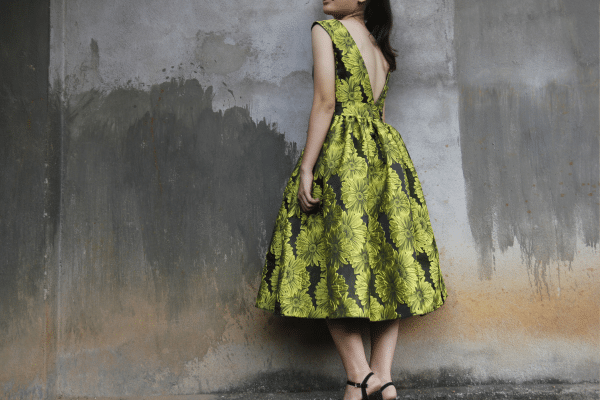
Wearing dresses on flights, especially long ones, can lead to discomfort and impracticality. Dresses often don’t provide the necessary coverage or ease of movement required in cramped spaces. Climbing over seats or navigating through the aisle can become challenging, potentially leading to awkward situations. Moreover, turbulence or sudden movements during the flight might compromise modesty, especially in lighter or more flowing fabrics.
To travel comfortably in a dress, choose designs that are travel-friendly. Fabrics that resist wrinkling, such as knits or blends, are ideal for long hours of sitting. Additionally, opting for a dress with a modest length and a comfortable fit, possibly paired with leggings, can provide both ease and comfort. This combination ensures practicality while still allowing for a stylish and travel-appropriate outfit.
Excessive Jewelry And Accessories
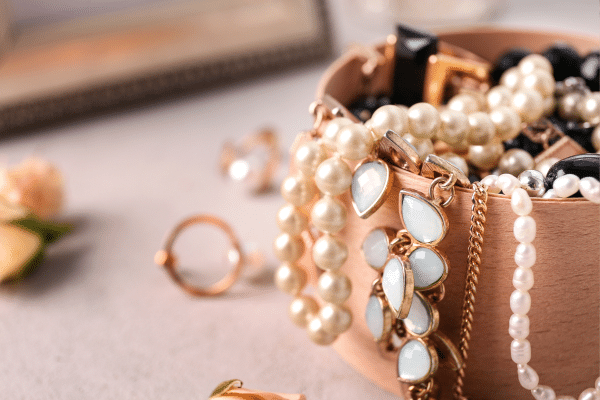
Excessive jewelry and accessories can be more trouble than they’re worth on a flight. They can become uncomfortable during long periods of sitting, especially if one tries to sleep. Bulky or heavy jewelry can dig into the skin or get caught on clothing and seatbelts. Additionally, metal accessories might set off security alarms, leading to delays and inconvenience at airport checkpoints.
There’s also the risk of losing valuable items during the hustle and bustle of travel. Airports and airplanes are places where items can easily be left behind or misplaced. To avoid these problems, it’s best to keep jewelry and accessories to a minimum. Simple, practical pieces that don’t impede movement or comfort are ideal for travel, ensuring a smoother and more stress-free journey.
Flip Flops
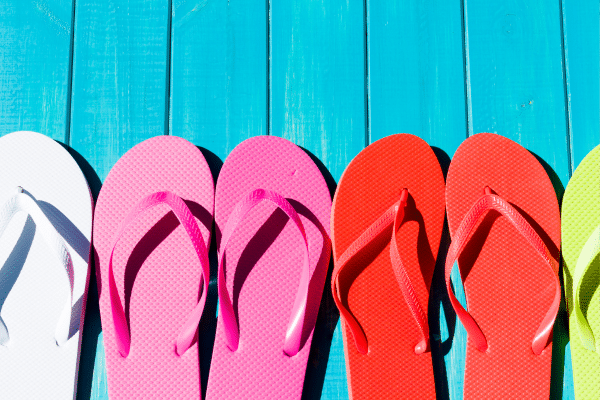
Flip flops are often chosen for convenience, but they are a poor choice for air travel. They offer minimal protection and support for feet, which is vital during a flight. Walking through airports and airplane aisles exposes feet to potential hazards, from rolling luggage to spills. Moreover, flip flops do not provide the necessary support for the feet during long periods of sitting or walking, leading to discomfort and tired feet.
Another concern with flip flops is the hygiene aspect. Airplanes are public spaces with high foot traffic, and wearing open-toed footwear increases the risk of exposure to germs and bacteria. Additionally, considering the proximity to other passengers in a confined space, maintaining foot hygiene is also a matter of courtesy. Closed-toe shoes with a comfortable fit are a much better alternative, ensuring both hygiene and comfort throughout the journey.
The Bottom Line
Choosing the right clothing for air travel goes beyond fashion – it’s about prioritizing comfort, practicality, and safety. Avoiding tight clothes, high heels, bulky outerwear, inappropriate dresses, flip flops, strong scents, and excessive accessories can significantly improve the travel experience. By making mindful choices, travelers can enjoy a more comfortable and pleasant journey. Remember, the key to a good flight experience often lies in what one decides not to wear.


